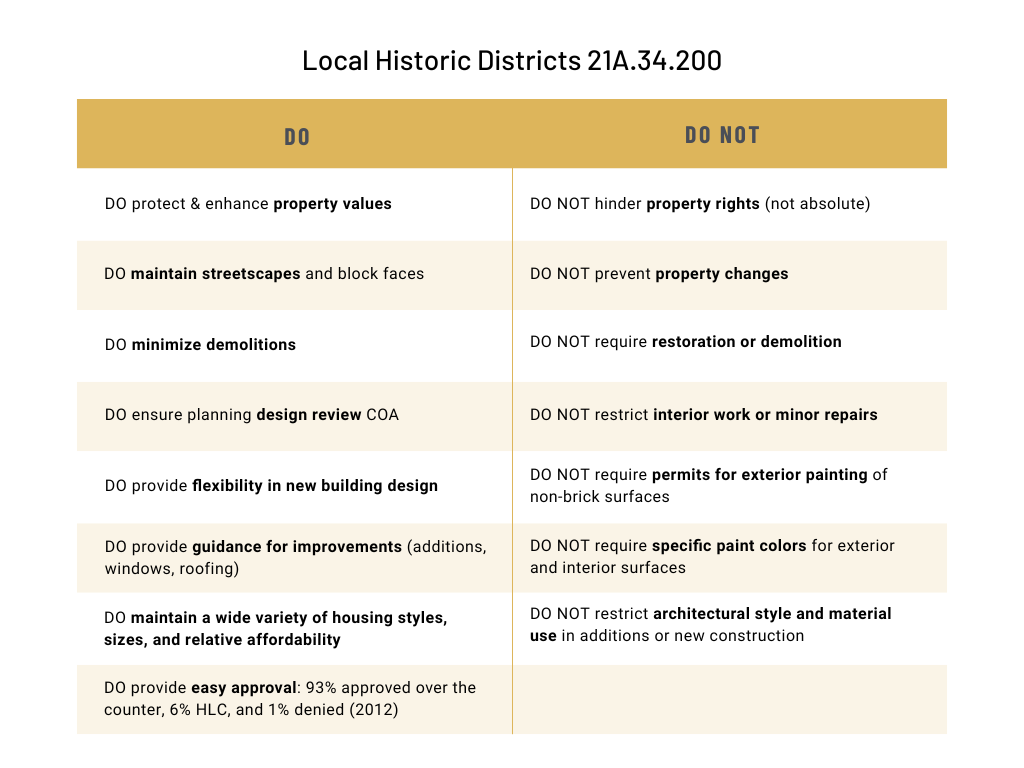Local historic districts usually enjoy the greatest level of protection under the law from any issues that may compromise historic integrity. This is because many land-use decisions are made at the local level. Local building design criteria are typically derived from the Secretary of Interior’s Standards for the Rehabilitation of Historic Buildings.
For example, protections Salt Lake City, according to 21A.34.200 include:
- Demolition denial, with an appeal process for economic hardship, safety, or life-threatening circumstances.
- Design review by city planning staff and/or a Historic Landmark Commission (HLC)
- Minor alterations can be approved by city planning staff while more substantial work is often reviewed by a Historic Landmark Commission (HLC)
- Public notification process
- Design guidelines that provide local standards that may be appealed; along with national guidelines that must be adhered to in design review
- The HLC’s decisions are binding, not advisory, and are enforced by the City’s planning staffing, building services division (when a permit is pulled), and the enforcement division on the ground during construction
A local historic district does not:
- Restrict the use of a property
- Prevent owners from making changes
- Require restoration or demolition
- Require additional permits for painting, minor repairs, or interior work
- Devalue a property




